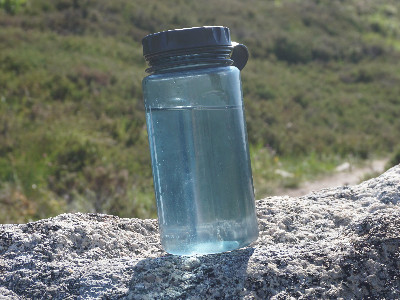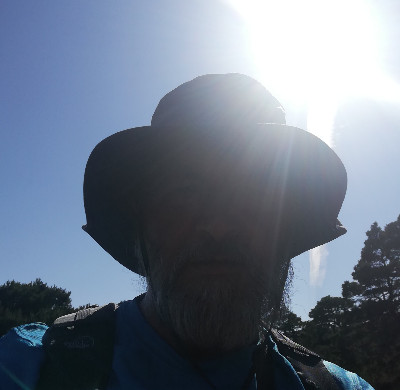Many associate Scottish hills with cold, wind and rain, but summer almost invariably brings days or spells of clear skies and sunshine, when temperatures can soar even on the tops. Sunshine and heat bring their own issues which it's important to be aware of to prevent heat exhaustion or more serious heat illness.
Here are some of our top tips for hiking in hot weather:

There's a high risk of heat exhaustion or heatstroke during hot weather or exercise. Given the high level of exercise involved in climbing a hill, in hot weather you might want to pick a less strenuous goal, or perhaps start earlier in the morning so you get the hard work done before the day heats up. Between 11am and 3pm will probably be the hottest part of the day, so the less strenuous activity you undertake during that time the better.
In prolonged hot, dry spells, many smaller streams may dry up, so it is a
good idea to carry extra water. Most people usually carry about a litre
of drinking water, but for hot weather you may want to take an extra
water bottle.
To help prevent heat exhaustion or heatstroke:
This will also prevent dehydration and help your body keep itself cool.
Keep an eye on children, the elderly and people with long-term health conditions (like diabetes or heart problems) because they're more at risk of heat exhaustion or heat stroke.

Heat exhaustion can and does happen, and can be serious especially where there may be no shelter or help for miles. Itís important to know how to recognise it and what action to take, as well as knowing how to keep cool and well hydrated to avoid the problem arising.
Signs of heat exhaustion include:
If someone is showing signs of heat exhaustion, they need to be cooled down:
1. Move them to a cool place or into whatever shade there is available.
2. Get them to lie down and raise their feet slightly.
3. Get them to drink plenty of water. Sports or rehydration drinks are OK.
4. Cool their skin Ė spray or sponge them with cool water and fan them. Cold packs around the armpits or neck are good, too. Cold packs may not be available in the mountains, but you can improvise by using clothing soaked in water.
If there are no signs of improvement after 30 minutes of treatment for heat exhaustion it may be developing into heat stroke, which can be very serious if not treated quickly. So at that stage you should dial 999 and ask for the Police and then Mountain Rescue.
Symptoms of heatstroke include:
While waiting for
assistance from Scottish Mountain Rescue you should stay put, try to keep the
casualty hydrated. Placing a wet buff or similar on the back of the neck and
fanning can all assist with lowering of temperature. If you can provide shade
this should be attempted.
Put the person in the recovery position if they lose consciousness while you're waiting for help.
Remember yourself and the others in the party: you are all enduring the same high temperature. If the temperature remains high you should all be drinking plenty and doing what you can to remain cool.
More information on heat exhaustion and heatstroke from the NHS.
Prolonged sun exposure will cause early ageing of the skin, wrinkles, age spots, hyperpigmentation and solar keratosis, which looks unsightly. Accumulated exposure can cause many types of non-melanoma skin cancer (NMSC), the most common cancer in the UK, which can be disfiguring. And at worst, melanoma, which can spread to other parts of the body.
Top five tips for coping with sunshine
1. The sun is
strongest between 11am and 3pm so, if possible, look to be active
outside of these hours, opting for early morning or evening sessions if
possible.
2. Apply a broad-spectrum product with an SPF30 or higher, before you
start activity, and reapply every 2 hours or more if in water or if you
sweat excessively.
3. Wear light, tight weave clothing that protects arms and legs as this is the
best way to avoid sunburn.
4. Remember to wear a hat or cap. Your forehead, scalp and ears
are vulnerable areas, so be sure to protect them.
5. Hydration is vital, and ideally with water. Thirst is a sign
you are already dehydrated, so drink at regular intervals whether you feel like
it or not.